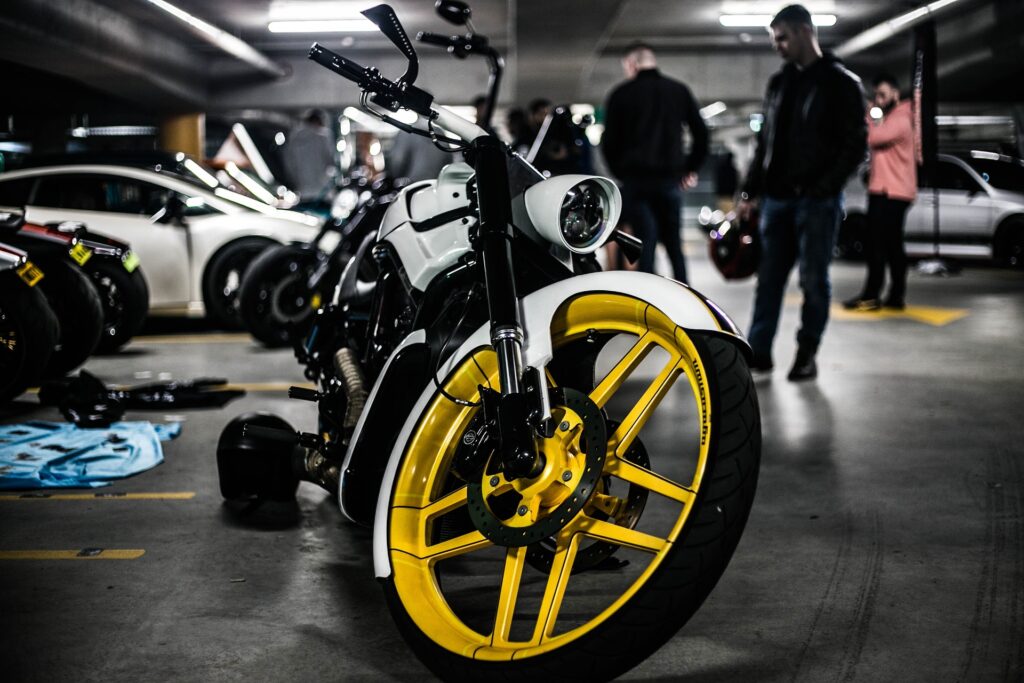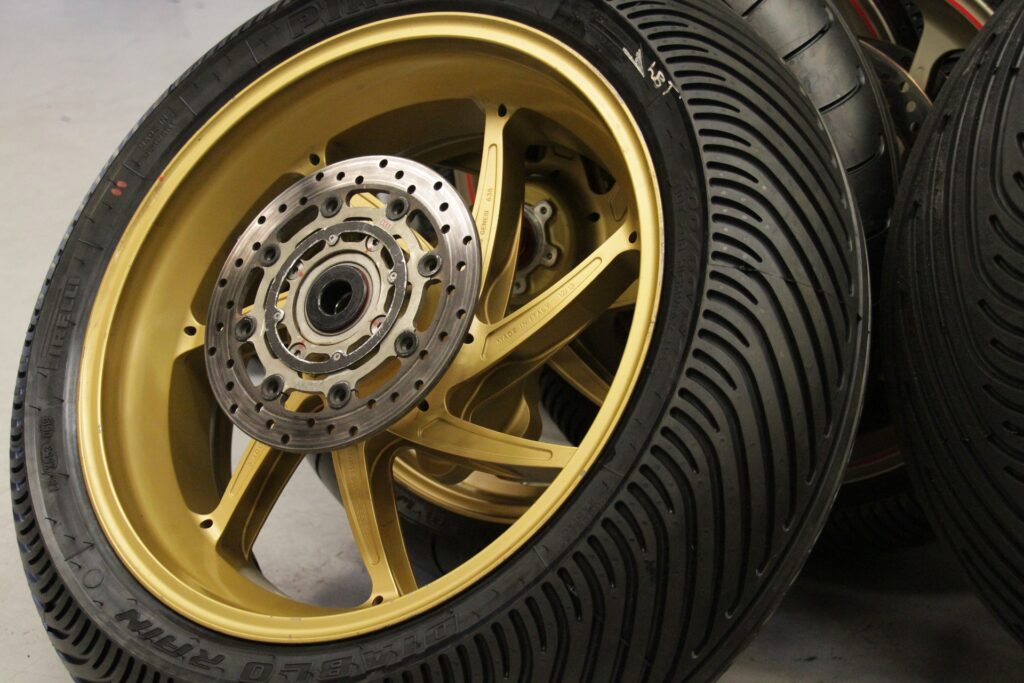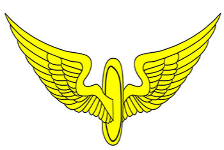Inspecting and Maintaining Your Motorcycle Tires – Easy 12-Step Guide

The importance of motorcycle tires cannot be overstated. Choosing the right tires for your motorcycle and maintaining them in good condition is essential. Even though tire failure is not necessarily a significant cause of accidents, it can contribute to motorcycle mishaps and significantly reduce the enjoyment of riding.
Worn, damaged, or under-inflated tires compromise the stability and handling of a motorcycle and can cost your hard earned cash in terms of repairs, fines, and possibly the impounding of your ride. Road safety regulations require tires to meet minimum standards for tread depth, overall condition, and seasonal tire requirements to be considered roadworthy. Primarily for the reasons aforementioned and considering the minimal cost of supplies and tools it’s a wise investment to regularly inspect and maintain your wheels.
The Air in Your Tires
Why are tires inflated with air? Because air is a lightweight, cost-efficient, readily available material that provides adequate suspension and support while helping to cool the tire.
Additionally, air is compressible, which allows the tire to absorb impacts from bumps and road imperfections, providing a more comfortable ride. Air pressure can also be adjusted to suit different road conditions, riding styles, and load-carrying capacities, improving the motorcycle’s handling and stability for your particular situation.
Your Motorcycle’s Contact Patch (Footprint)
The “footprint” of a tire refers to the area of the tire that comes into contact with the ground. This area is called the “contact patch” and is the point of interaction between the tire and the road surface. The contact patch is paramount because its size and shape affect a tire’s handling, traction, and rolling resistance, as well as its wear and durability. Even a slight alteration in profile brought on by wear can impact the contact patch.
The Size
The contact patch size depends on several factors, including the tire’s load and inflation pressure, the type of tire (road, racing, off-road, etc.), wear, and the road’s surface. Tire pressure is your tire’s lifeblood, and keeping tires inflated correctly helps ensure your bike has the optimal contact patch size.
Even a slight alteration in profile brought on by wear can impact the contact patch.
The Shape
A Tire profile, what we call aspect ratio, determines the shape of the contact patch. The aspect ratio is the tire’s height from the rim to the tread divided by the width.
Lower aspect ratios, (Low profile tire 50 or 55.) have a short and wide contact patch and generally result in shorter and stiffer sidewalls, providing improved handling and cornering but a rougher ride. While higher aspect ratios (High profile tire 70 or 80.) have a long and narrow contact patch and provide a more comfortable ride, but can reduce handling and stability, especially at high speeds.
In general, the larger the contact patch, the better a tire will perform in terms of handling, traction, and stability, but a larger patch also leads to more wear and a greater rolling resistance, which can affect fuel efficiency.
The Writing on the Wall
All those numbers and letters found along a motorcycle tire wall provide basic information about the tire’s specifications and performance. Understanding this information will permit you to make educated decisions regarding your tire selection and ensure it operates within its limits. Below are some of the most common markings:
- Tire Size: This indicates the tire’s width, height, and diameter, expressed in millimetres or inches. For example, a “120/70-17” tire size refers to a tire with a width of 120mm, a height of 70% of the width, and a diameter of 17 inches.
- Load and Speed Rating: This indicates the maximum load and speeds the tire can carry. The rating is expressed as a code, such as “81H”, where the number represents the load capacity and the letter represents the speed rating.
- DOT Code: This is the Department of Transportation code that indicates the tire meets federal safety standards. The code consists of the manufacturer’s code, the tire’s age, and other information. Tires expire six years from the date of manufacture, regardless of when you purchased them or the quantity of tread remaining.
- Tread Pattern: The tread pattern provides information about the tire’s intended use and performance. For example, a tire with a sporty tread pattern is designed for sport-oriented riding, while a tire with a more aggressive tread is intended for off-road use.
- Tire Type: This indicates whether the tire is designed for use on the front or rear of the motorcycle.
- Maximum Inflation Pressure: This indicates the maximum air pressure the tire can safely handle, expressed in PSI (pounds per square inch).
- Tread Wear Indicator: Tires come with a Tread Wear Indicator, also called Tire Wear Bars. These are small rubber bars running across the tread. When the tread is worn down to the same level as the indicators, it is time to replace the tire.

Buying the Right Tire
In addition to the bike manufacturer recommendations, choosing the right tire for your motorcycle involves considering several factors, such as your bike type, riding conditions, performance, budget, and brand.
Different motorcycles, such as sport, cruisers, touring, and dual-sport bikes, have different tire requirements. Choose a tire designed for your type of motorcycle and its intended use.
Remember the types of roads and weather conditions you will encounter, and choose the appropriate tire tread pattern. For example, if you frequently ride in wet conditions, select a tire with a more aggressive tread pattern for better traction. Local laws may require winter tires if you live somewhere that experiences all four seasons.
The level of performance you require from your tire is also critical when shopping for tires—the grip, handling, and stability. Choose a tire that meets your performance requirements and offers the level of safety you need. While ensuring the tire size meets the manufacturer’s recommended compatible and recommended range of your ride.
Your budget will also influence your selection. Tires come in a range of prices and quality levels. Choose a tire that fits your budget and provides the quality and performance required—research different brands and models of tires to determine which ones best suit your needs. Read reviews and ask for recommendations from other riders to make an informed decision.
Maintenance and Inspection
Regularly inspecting and maintaining your tires will not only prolong it’s lifespan but, similar to selecting the correct tire, is vital for the secure and efficient operation of the motorcycle. If you find any problems with a tire, have it inspected by a professional and replace if necessary. To check a motorcycle tire for safety, follow these 12 steps:
- Check the tire tread depth: Ensure the tire tread is not worn down to the wear bars, indicating minimum safe depth.
- Look for cuts, punctures, or other damage: Check the sidewalls and tread for cuts, punctures, or any additional visible deterioration.
- Check the tire pressure: Use a tire gauge to ensure the tire pressure is within the manufacturer’s recommended range. If Possible, Start With Cold Tires. Manufacturers define PSI, or “pounds per square inch,” of tire pressure with the assumption that the tires are cold. The tires are said to be cold when a motorcycle sits for three hours or longer or is ridden less than a mile (1.6 km) at a moderate speed. Maintaining proper inflation can help prevent cracking and drying. Check the air pressure regularly and inflate the tire to the recommended level.
- Look for uneven wear: Uneven wear can indicate problems with tire balance or alignment.
- Check for dry rot or cracking: Look for any signs of dry rot, cracking, or other forms of tire degradation, especially on older tires.
- Rotate the tire: Rotate the tire to inspect the entire circumference.
- Repeat the process for the other tire.
- Balance: Have the tire balanced by a professional if you notice any vibration or uneven wear.
- Storage: When storing your motorcycle for an extended period, remove the tires from the bike and store them in a cool, dry place to prevent flat spotting and cracking.
- Avoid Over-Exposure to Sunlight: Direct sunlight can cause the tire to dry out and crack over time. Store your motorcycle in a shaded area or cover the tires with a protective cover.
- Use a Tire Conditioner: A tire conditioner can help keep the tire supple and prevent it from drying out. Apply the conditioner to the tire according to the manufacturer’s instructions.
- Avoid Harsh Chemicals: Harsh chemicals, such as gasoline and oil, can damage the tire and cause it to dry out. Clean any spills or leaks immediately and avoid storing the motorcycle near such substances.
Tires should be cleaned and protected every time you wash your bike. Follow the aforementioned checklist, and use this opportunity to give each tire a thorough inspection. This will help maintain your tires in “shape” and add to their performance.
Use mild soap and water to clean the tires and remove any dirt or debris. Avoid using harsh chemicals, as they can damage the tire. Once the tires are clean and dry, apply a tire conditioner to keep them supple and prevent them from drying out. Apply the conditioner to the tire according to the manufacturer’s instructions.
In Conclusion
The few minutes you spend on tire maintenance can provide you and passengers with a more enjoyable, safer, and more comfortable riding experience, allowing the for the full enjoyment and excitement of motorcycling.



